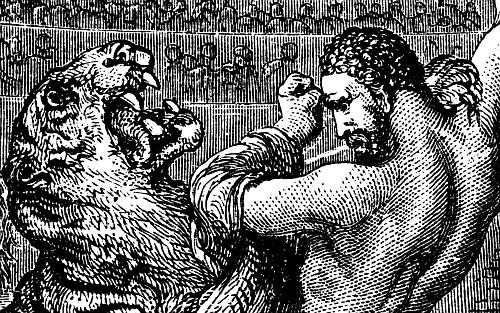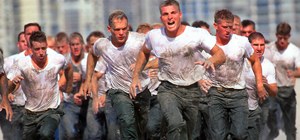Mix Things Up in Practice in Order to Better Understand Basic Concepts
 Saturday, October 15, 2011 at 04:12PM
Saturday, October 15, 2011 at 04:12PM  CAtennis
CAtennis Sometimes it's frustrating to go through the same drills and concepts over and over again and not make any progress. It's not always the player's fault and it doesn't have to be the coach's fault either. The communication process takes place through various "filters" in that what the coach thinks is not always what he says, what he says is not always what the player hears, and what the player fears is not always what the player understands. So even with a two-person team, it's lot like playing telephone. Often times, coaches are advised to tell the players the same things but in different ways since not everybody associates a sequence comprised of the same terms in exactly the same way.
Take, for example, a basic concept such as "stepping in". It's not unreasonable to think that players hear this on a day-in and day-out basis. For the most part, they understand what it means - use the forward momentum of the body to hit the ball. That is, don't wait for the ball to come to you; go to it. Simple enough. But is it, really?! A lot of players tend to "step in" but leave their bodies behind. It seems as if the legs are going forwards, but the body doesn't follow suit resulting in the upper body leaning backwards - thereby sending the ball flying. In these cases, I remind the players that "stepping in" is not good enough; they must also "lean in". So I have them grasp this concept by stepping in and then leaning against the fence (or wall). Similarly, I try to demonstrate that by stepping in and leaning back, you can be thrown off balance with the tip of a finger. In other words, these players come to understand that stepping in is not enough; they have to also manipulate their weight into the ball.
Again, a lot of times coaches repeat the same things over and over again expecting the correct result with every player. Some people are more intuitive than others so they more readily understand the basic concepts. Other players, however, need to be coached in a different manner. On many occasions, I put players in a swimming pool (with a plastic bag over an old racket) in order for them to understand how the ball is supposed to "dip" below the level of the ball, and then "push through the water" towards the contact point. When dealing with players who lack acceleration, I sometimes have them alternate between pulling rubber bands (or surgical tubing) or throwing medicine balls and hitting groundstrokes. Or, to practice volleys, have the players alternate between using foam baseball bats and tennis racket (to correct over-swinging).
This is really not that new of a concept. Many players have been taught to serve by throwing wooden rackets over the net (or on a grass field) before hitting serves. However, it seems that the artistry of figuring out different ways to "get to" the player has been lost or diluted over time. Ultimately, tennis is fun and learning it should not be a monotonous burden. Try mixing things up in order to develop a better understanding of the basic concepts.



